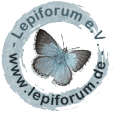Version 11 / 12 vom 23. September 2025 um 14:43:54 von Harald Lahm
Länder:

 +2Kontinente:EU
+2Kontinente:EU


 +2Kontinente:EU
+2Kontinente:EUInhalt
1. Lebendfotos
1.1. Falter
1-3: 2 ♀♀, Spanien (Festland), Aragonien, La Jacetania, Jaca, Berg Oroel, 1145 m, 42.524910, -0.497084, 4. Juli 2021, am Licht (leg., gen.det. & Foto: Friedmar Graf)Forum
4-5: ♂, Spanien (Festland), Kastilien-La Mancha, Sierra del Segura, westlich von Nerpio, 1517 m, 38.066075, -2.498283, 19. Juni 2019, am Licht (leg., gen.det. & Foto: Friedmar Graf)Forum
2. Diagnose
2.1. Männchen
1: ♂, Spanien (Festland), Kastilien-La Mancha, Sierra del Segura, westlich von Nerpio, 1517 m, 38.066075, -2.498283, 19. Juni 2019, am Licht (leg., gen.det. & Foto: Friedmar Graf)Forum
2.2. Weibchen
1-2: 2 ♀♀, Spanien (Festland), Aragonien, La Jacetania, Jaca, Berg Oroel, 1145 m, 42.524910, -0.497084, 4. Juli 2021, am Licht (leg., gen.det. & Foto: Friedmar Graf)Forum
2.3. Genitalien
2.3.1. Weibchen
1: ♀, Spanien (Festland), Aragonien, La Jacetania, Jaca, Berg Oroel, 1145 m, 42.524910, -0.497084, 4. Juli 2021, am Licht (prep., gen.det. & Foto: Friedmar Graf)Forum
4. Weitere Informationen
4.1. Etymologie (Namenserklärung)
Leraut (2002: 145): « Derivatio nominis : de Gallia, Gaule. »
4.2. Faunistik
Nur aus Frankreich bekannt. Leraut (2014) schreibt zur Verbreitung: "France (Gard, Anduze), Alpes-Maritimes (Cardonas)." Die Art wurde nach einem Weibchen beschrieben und Leraut (2014) muss feststellen: "To date, the male is still unknown."
4.3. Typenmaterial
Leraut (2002: 145) beschrieb die Art nach einem einzigen Weibchen: « HOLOTYPE ♀, France, Gard, Anduze, 3/6 juillet 1905 (Radot-Griard) (prép. gén. Leraut n° 7023 ; MNHM, Paris). »
4.4. Literatur
- Erstbeschreibung: Leraut, P. (2002): Contribution à l'étude des Phycitinae (Lepidoptera, Pyralidae). — Nouvelle Revue d'Entomologie (N. S.) 19: 141-177. Ex libris Werner Wolf.
- Leraut, P. (2014): Moths of Europe. Volume 4. Pyralids 2. - 441 S.; Verrières-le-Buisson (N.A.P Editions).
- Varenne, T. & J. Nel (2022): Sur les Phycitodes de France : description du mâle de P. gallicella Leraut, 2002 avec une clé de détermination basée sur les genitalia mâles (Lepidoptera, Pyralidae, Phycitiinae). — Revue de l'Association Roussillonnaise d'Entomologie 31 (4): 254-260.














